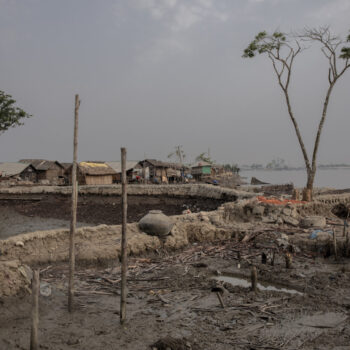South Africa’s Department of Environmental Affairs recently organised a four day national dialogue signalling its progress towards transformation and implementation of its low emission climate resilient climate policies.
The dialogue was held in Johannesburg on 10-13 November 2014 and along with E3G's Chantal Naidoo, was attended by scientists, policy makers, private sector, civil society, development partners and others to debate critical issues, share innovations and learn from good examples. The National Climate Change Response Policy of South Africa focuses on prioritising responses that have mitigation and adaptation benefits, but importantly those that also contribute to economic development, job creation and improved public health.
The themes articulated during the conference covered i) policy, governance and interface with science and society, ii) growing the economy and transitioning to climate resilience and low carbon options, iii) resourcing the transition through finance, trade, skills and transition technologies, iv) scaling up implementation through specific programmes and interventions (ecosystems, infrastructure, carbon sinks, waste, human settlements etc), v) monitoring progress through effective use of data and vi) looking outwards towards agreements to be in made in Paris 2015 and beyond.
Among the key milestones of the South African conference was the release of a study on potential mitigation options for South Africa. The study aimed to translate the national objectives on emission reductions into a sectoral approach and the data is presented in terms of a set of abatement pathways. These pathways are based on what may be technologically achievable over a given time scale and influenced by economic growth projections. The key findings of the study are two projections for carbon emissions i) without measures (WOM) projection of emissions from 2000 to 2050 – where emissions are projected to reach 1,692 MtCO2e by 2050 and ii) with existing measures (WEM) for the period 2000 to 2010 the projections follow the actual path of observed emissions according to the draft 2010 National Greenhouse Gas Inventory (GHGI), projected to reach 1,593 MtCO2e by 2050. National mitigation potential (assuming 100% implementation of all identified mitigation options) is estimated at 100 MtCO2e in 2020, 340 MtCO2e in 2030 and 852 MtCO2e in 2050. This represents a reduction of reference case WEM emissions of 15%, 40% and 54% in 2020, 2030 and 2050, respectively. Marginal abatement costs have been determined based on these pathways for each of these timescales, factoring in technologies as they become feasible.
Full conference details and detailed report on South Africa’s mitigation potential can be found online here.


